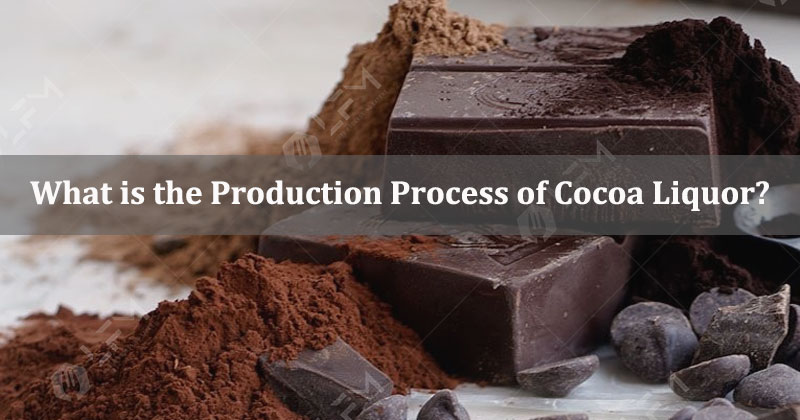In the world of chocolate, cocoa liquor is not only the core ingredient in chocolate manufacturing, but also an important material in many desserts, so cocoa liquor is crucial. So what is the production process of cocoa liquor? Today, let’s explore the birth journey of cocoa liquor in a modern factory.
Step 1: Fermentation and drying
Although fermentation and drying usually occur before the cocoa beans reach the factory, in some high-end production lines, this step may also be strictly monitored to ensure quality. Fermentation is a key step in the formation of the flavor of cocoa beans. Through natural fermentation, the sugar in the cocoa beans is converted into acid, giving it a unique aroma. Drying removes excess moisture and facilitates long-term storage and transportation.

Step 2: Roasting
The cocoa beans arriving at the factory go into large cocoa bean roasting machines, which is a key step in the deep transformation of their flavor. Precisely controlled temperature and time allow a wonderful chemical reaction to occur inside the cocoa beans, releasing a rich aroma while killing potential microorganisms to ensure food safety.
Step 3: Cooling and hardening:
The roasted cocoa beans need to be cooled first to harden, which is beneficial for subsequent processing. The cooling process can help the bean shells become brittle and easier to peel off.
Step 4: Crushing and peeling:
The cooled and hardened cocoa beans will be sent into a crusher for crushing. During this process, cocoa beans will be broken into small pieces or fragments, causing the skin to separate from the endosperm (i.e. kernel). Then further remove the outer skin through wind selection. In modern industrial production, specialized peeling machines are usually used.
Step 5: Grinding
After roasting, the cocoa beans are fed into a grinder. Between the high-speed rotating grinding discs, the cocoa beans are crushed into extremely fine particles, and the cocoa butter is gradually released to form a paste-like substance, which is the preliminary cocoa paste. This process requires strict temperature control to keep the cocoa butter in its best condition and avoid overheating, which can lead to loss of flavor.
Step 6: Refining and Blending
In order to obtain a more delicate and smooth cocoa mass, the preliminary cocoa paste also needs to go through a refining process. At this stage, the cocoa paste is further ground and mixed, sometimes with small amounts of sugar and emulsifiers added to adjust taste and stability. This process not only enhances the texture of the cocoa liquor, but also ensures uniformity and consistency in the final product.
Step 7: Cooling and Forming
Finally, the carefully prepared cocoa paste is poured into the mold and sent into the cooling chamber. As the temperature gradually decreases, the liquid cocoa paste gradually solidifies into solid blocks, forming what we call “cocoa liquid blocks”.
At this time, the cocoa liquid contains approximately 50% to 55% cocoa butter, which retains the original flavor of cocoa beans and possesses ideal physical properties, making it suitable for subsequent chocolate manufacturing or other food applications.
Conclusion:
From the cocoa beans to the precious cocoa liquor, every step is a perfect fusion of tradition and technology. The production process of cocoa liquor is not only the transformation of physical form, but also the sublimation of flavor and quality.
Our cocoa liquor processing line can handle all the above processes to help your factory obtain the best quality cocoa liquor. Welcome to contact us for quotation!
Email: [email protected]
WhatsApp/Mobile: +8615515597212